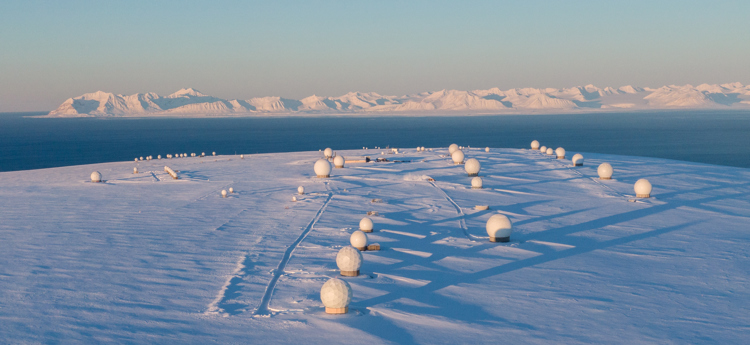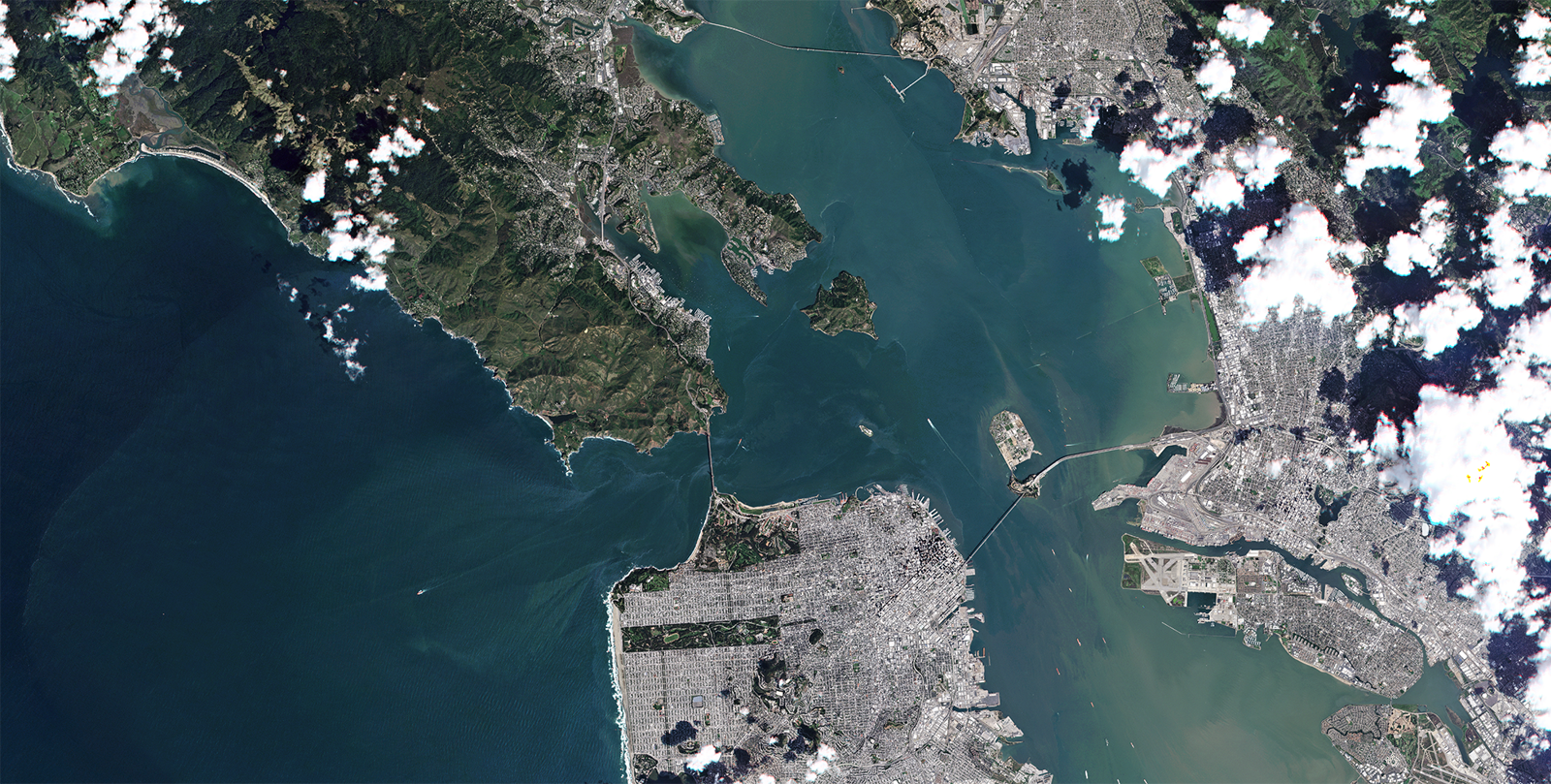Image:RapidEye last light image of San Francisco, California. © 2020, Planet Labs Inc. All Rights Reserved.
RapidEye was a five-satellite constellation producing 5-meter resolution imagery with the unique ability to image any area on Earth once per day.
The retirement of the RapidEye mission marks the end of an era, and KSAT is proud to have been part of the “RapidEye-family” through the mission’s lifetime.
KSATs contribution was on the ground segment, supporting the mission from the KSAT Svalbard Ground Station. The station is located at 78´North and is the only station in the world that can provide all-orbit support for most polar orbiting satellites and is today the world’s largest commercial ground station.
Having supported the RapidEye constellation with around 25,000 passes yearly on both X band and S band, this accumulates to an astonishing 300,000 supports in total.
Paved the way for new ground station concept
RapidEye, being a constellation of 5 satellites flying in sun-synchronous orbit, required new solutions on the ground. KSAT is always searching for the best solutions for their customers, and RapidEye was no exception.
“RapidEye paved the way for a new dedicated antenna concept at KSAT,” says Rolf Skatteboe, President and CEO of KSAT. “Using one dedicated antenna at Svalbard to do all-orbit support proved to be a cost-efficient solution perfectly suited for a set of satellites like RapidEye,” Skatteboe continues.
KSAT has been involved from the beginning to the very end of RapidEye’s mission lifetime. With an expected lifetime of 7 years that’s been exceeded by 4, the RapidEye constellation has surpassed every expectation and has touched many lives over the years of operation.

Image. KSAT Svalbard Station was used to support the RapidEye constellation with around 25,000 passes yearly on both X band and S band, this accumulates to an astonishing 300,000 supports in total.
A unique digital image archive
While RapidEye satellites will no longer collect imagery for commercial or noncommercial use, their archive of impressive data will remain available to Planet customers, and will be used and appreciated for years to come.
The constellation was designed to collect 4 million square meters initially. In its lifetime it managed to collect more than 6 million square meters daily, which is a major achievement.
“At the end, what remains is this unique historical archive spanning more than 12 years with 15 billion square kilometres of imagery,” says Kattia Flores Pozo, Manager, Satellite Operations at Planet.
“The archive will be cherished and will remain in the minds of everyone who contributed to RapidEye’s eleven years in orbit”, she said to the team as KSAT held a toast to commemorate the end of the successful mission.
After almost a decade of surpassing expectations and delivering critical imagery to the world, we join our friends at Planet in saying goodbye to RapidEye.
Ad astra!
